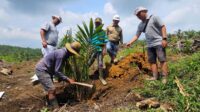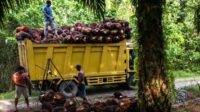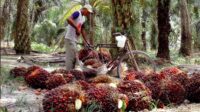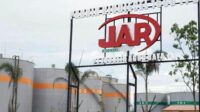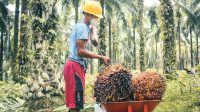PALMOILMAGAZINE, JAKARTA — Indonesia’s Plantation Fund Management Agency (BPDP) is strengthening efforts to support the implementation of B50 biodiesel — a 50% blend of palm-based biofuel with diesel — marked by a strategic forum led by BPDP President Director Eddy Abdurrachman at the Surachman Tjokrodisurjo Building in Jakarta.
The forum brought together stakeholders across government, industry, research institutions, and technical agencies to discuss the latest studies related to the technical, supply-demand, economic, and fiscal implications of rolling out B50.
One of the key highlights was a projection that national crude palm oil (CPO) output may only reach 60 million tons by 2045 — well below expectations. Stagnant upstream productivity, limited land expansion, and rising threats from diseases such as Ganoderma were cited as major constraints. Extraordinary measures, including boosting productivity, optimizing idle land, and applying efficient agricultural technologies, were recommended.
Also Read: BPDP Commits to Inclusive and Resilient Palm Oil Industry
Domestic CPO demand to support B50 is estimated to reach 17.5–18 million tons, a level that could significantly reduce export volumes. A joint study by Sucofindo–Appertani forecasts that adoption of B50 in 2026 could cut palm oil exports by up to 11.40% versus 2024, as stagnant production fails to keep pace with rising domestic consumption.
The forum also highlighted Indonesia’s reliance on imported methanol — a key input in biodiesel manufacturing — and NaOH/KOH catalysts, imports of which reached US$190 million (Rp2.85 trillion), potentially eroding the foreign-exchange benefits of the biodiesel program.
Prof. Udin Hasanudin, a BPDP R&D Committee member from the University of Lampung (UNILA), highlighted the sizeable potential of alternative feedstocks such as EFB oil, POME oil, soapstock (SBE) oil, and used cooking oil (UCO). Estimated to exceed 2 million tons, these alternatives are relatively free from sustainability issues such as the EU’s deforestation regulation (EUDR). However, further testing and regulatory development are required before integrating these raw materials into the production chain.
From a technical standpoint, the Oil and Gas Testing Center (LEMIGAS) presented the results of tests on various biodiesel blends including B35D15, B40D10, and B50. Early results indicated that the B35D15 blend performs best in terms of engine performance, fuel consumption, emissions, and filtration efficiency. However, adopting pure B50 will require enhanced biodiesel quality — particularly in water content, monoglycerides, and oxidative stability — as well as extensive operational field testing.
Economic modeling also showed that, without adjustments, the B50 mandate could result in subsidy deficits of up to Rp25 trillion during 2026–2027. In response, BPDP proposed a flexible blending ratio approach — similar to Brazil’s dynamic bioethanol model — allowing adjustment of blend proportions in line with CPO market prices.
The readiness of production and distribution infrastructure, such as Pertamina’s green refineries in Cilacap and Dumai, was also highlighted as a critical factor for nationwide B50 deployment. (P2)












